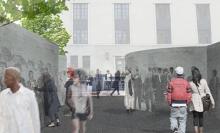Witness Walls: Interdisciplinary Unit

To commemorate Nashville's role in the historic Civil Rights Movement, the Metro Arts Commission approved the selection of artist Walter Hood to create new public art. The Metro Arts Teacher Cadre worked together to create six standards-aligned lessons that focus on the Witness Walls artwork planned for installation in downtown Nashville in 2015. The lesson plans are shared to benefit Nashville-area teachers and others throughout Tennessee and the surrounding region. The design for Witness Walls utilizes iconic photos of the Civil Rights movement in Nashville to honor the events and the people who created the blueprint for nonviolent protest. The installation will be located on the west side of the historic Metro Nashville Courthouse, steps away from the historic April 19, 1960 student-led protest.



